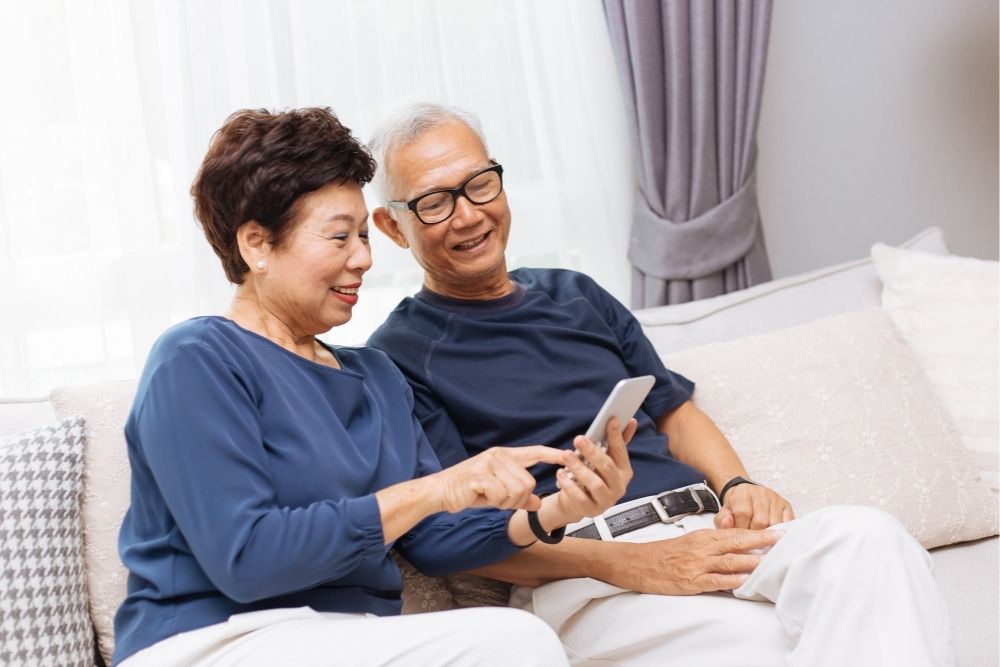 Are you and your senior loved ones taking advantage of technology to remain connected, engaged, and healthy? From tablets and gadgets designed especially for seniors to applications that help with medication organization and reminders, the digital age offers a range of technological applications useful to seniors.
Are you and your senior loved ones taking advantage of technology to remain connected, engaged, and healthy? From tablets and gadgets designed especially for seniors to applications that help with medication organization and reminders, the digital age offers a range of technological applications useful to seniors.
Review this “inventory” to see if some of these options would improve aging family members’ health and wellbeing, not to mention their sense of remaining connected.
1. Senior-Specific Tablets and Gadgets
Tech manufacturers are quick to tell you any of their products can become “aged-friendly,” but that’s not always the case. Most adults 75 years or more benefit from tech on the simpler side, and that’s especially true for anyone with Alzheimer’s or dementia.
Some smartphones advertise themselves as simple phones that offer all of the basic features you want in a smartphone (unlimited talk/text, photo/video options, and the ability to download apps). Often, there is also an “Urgent Response” button, pre-programmed for first response teams, to supplement any other necklace/emergency-response device.
If your spouse or parent prefers landlines for calls and is less interested in texts, there are tablets designed specifically for seniors. These work to help seniors connect with loved ones and the internet without the complicated features preloaded on other tablets.
2. Fitness Trackers and Reminders
Daily exercise is a tenet for good health at any age. In addition to boosting moods and immune function, daily movement supports healthy weight management, sleep habits, and keeps latent health conditions in check.
There are many ways wearables are helping seniors, such as:
- Step counters
- Medication reminders
- Fall alerts/urgent response features
- Tracking features to alert caregivers if the family member/client wanders out of the set boundary
Examples of simple-to-use wearable technology include UnaliWear’s KanegaWatch, the CarePredict wearable monitor, and Lively’s Safety Watch system (that’s the same company that manufactures Jitterbug phones).
3. Social Media and Video Chat Features
After retirement, social networks rapidly disband as some people hit the road or downsize and relocate to be closer to family. Others may make the transition into assisted living or memory care.
Losing a social network like that takes its toll on seniors, and social media platforms offer friends and former colleagues a way to remain connected. Similarly, social media platforms keep family members more consistently connected and engaged.
If your loved one is open to embracing technology, we highly recommend making weekly or bi-weekly video chats a regular occurrence. Use their schedule to guide the day/time each week and keep that consistent.
You can also use a platform such as Sign-Up Genius to have children, grandchildren, siblings, etc., sign up for slots. Doing so ensures your parent or grandparent is actively engaged with others regularly and helps everyone keep an eye out for signs the aging adult requires more support.
4. Blogs for and by the Life-Wise
We’ve mentioned using social media channels and video chat options to remain engaged with family and friends. There are also plenty of internet resources used to connect seniors with others or help them feel less alone in what they’re experiencing.
Many blogs and websites are written for seniors, and many of them are written and published by the life-wise (70+) themselves. Some are specific to healthcare, travel, or caregiving, while others are focused on the ups and downs of aging from a personal perspective.
5. Audiobooks
Reading becomes increasingly challenging as eyesight begins to fade. For many, there’s a point when an updated prescription and larger print no longer do the trick. This is where audiobooks can transform the life of a literature-loving adult.
A smartphone or tablet is all that’s required to listen to audiobooks (Kindle Fires and other screen-based gadgets also work). Listening to books is such a popular activity for our clients and their family members/caregivers that it topped our list of fun activities for the blind elderly.
While there are plenty of paid audiobook subscription options (Audible, Blinkist, Audiobooks, Scribd, etc.), don’t forget about the local library. Library systems have a seemingly infinite “stock” of audiobooks that can be checked out for free using your card and an online account. Of course, you can also visit the library in person for help from a librarian. Either way, with free app downloads like OverDrive, you can listen to available audiobooks without spending a penny.
6. Digital Voice Assistants (Alexa/Echo, Twilio, Agora, etc.)
Seniors who live alone may enjoy the “company” of a digital voice assistant, such as Alexa, Echo, and so on. These systems offer a simple way to listen to your favorite music, ask questions about historical and pop culture facts, set timers – the list goes on.
Our favorite example is Alexa Together, offered by Amazon. Alexa Together features customized alerts, 24/7 emergency response, circle of support to include other family members and loved ones, reminders/alerts, and more.
Technology for Seniors: Staying Connected
Age is not an excuse for bowing out of technological life. Many advances in the digital world are innovated specifically with Baby Boomers and their parents in mind. Would you like to learn more about how the combination of home care services and technology can benefit your senior loved ones?





